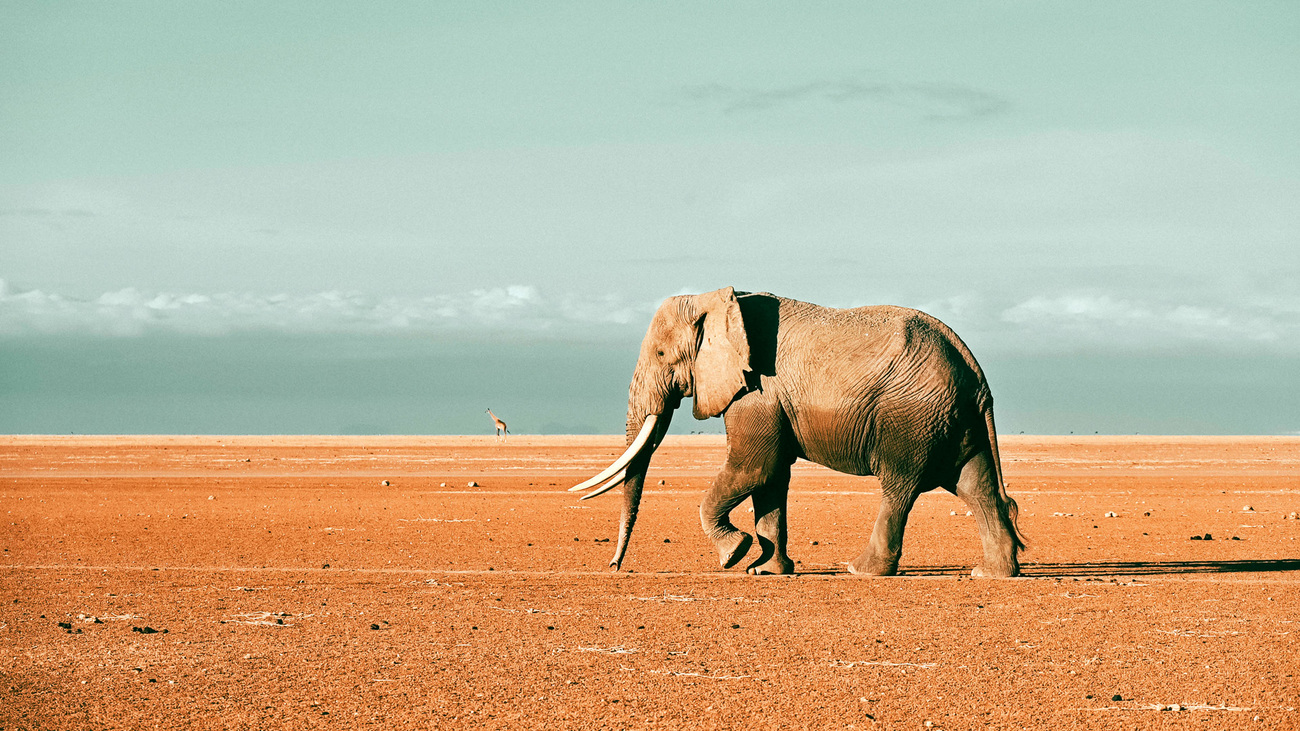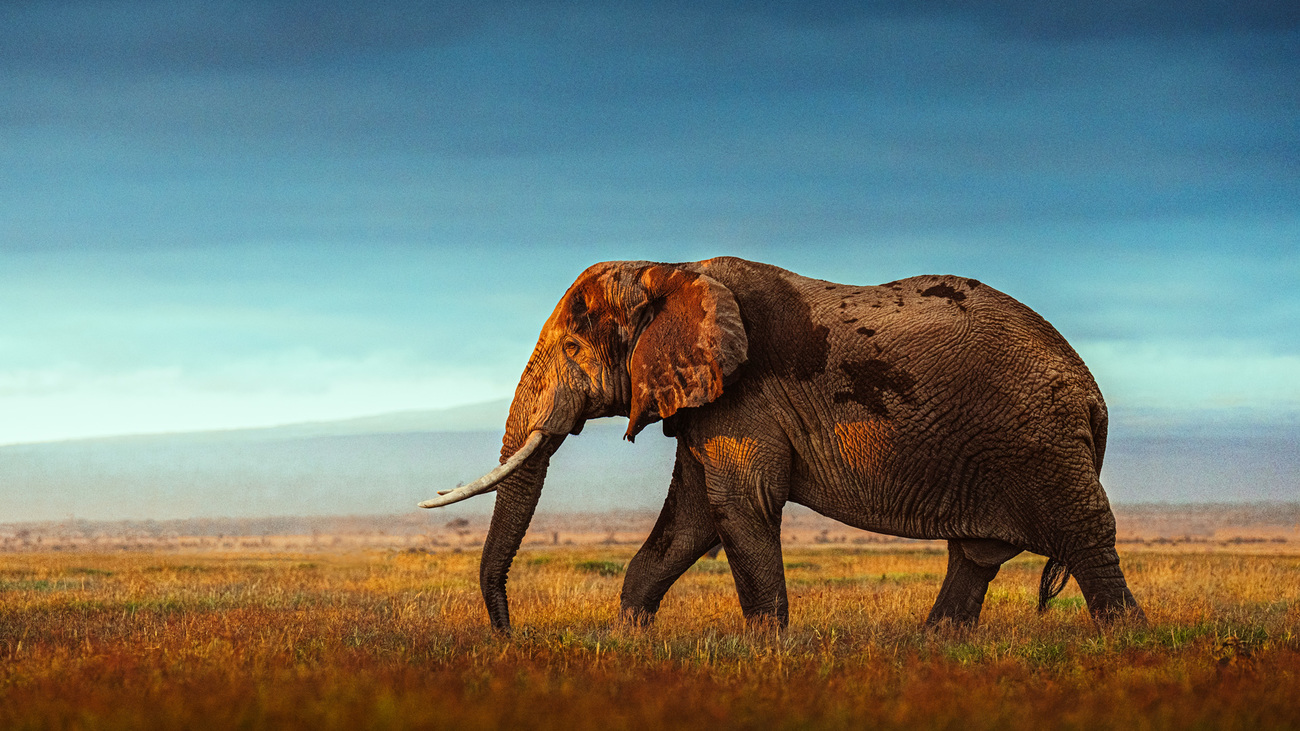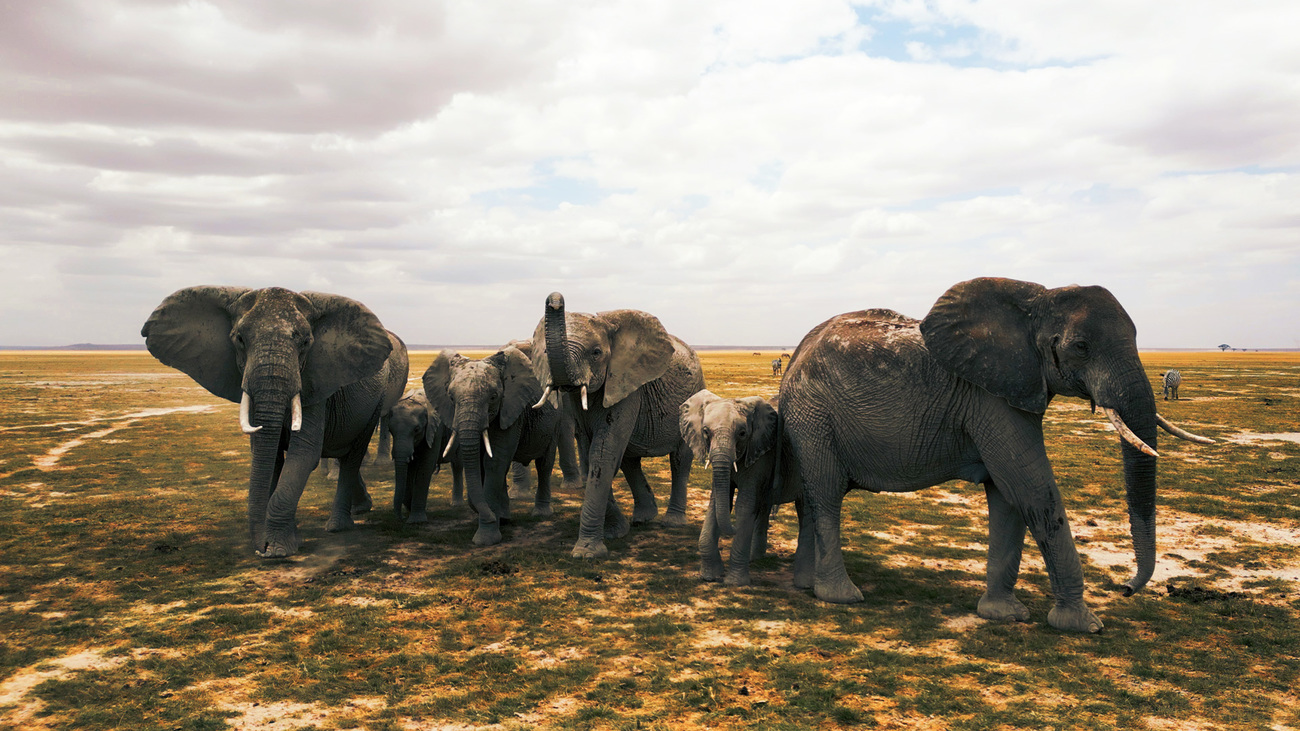Protecting the welfare of elephant populations - Kenya
Partnering with the Kenya Wildlife Service to protect wildlife
Where do elephants come from?
Elephants originated in Africa and Asia, the only regions where wild elephant populations are found today. Two species of elephant are native to Africa: the African savannah elephant and the African forest elephant. In Asia, there is one species, the Asian elephant. This species contains a few subspecies, including the Sri Lankan elephant, Indian elephant, Borneo elephant, and Sumatran elephant.
The oldest known elephant ancestor is a species called Eritherium, which only grew to be about 60 centimeters (24 inches) tall. This species lived in Morocco during the Paleocene epoch (between 66 million and 56 million years ago). The earliest fossil of a modern-day elephant species dates back to 4 million years ago.
How much does an elephant weigh?
Newborn elephant calves weigh around 90 kilograms (200 pounds) at birth. These calves become capable of walking within an hour of being born. Baby elephants don’t drink milk with their trunks—they use their mouths. This means they need to stand very quickly after they are born in order to suckle.

What’s the largest elephant on record?
The largest elephant ever recorded was an adult male African savannah elephant. He weighed 11,000 kilograms (24,000 pounds) and was nearly four meters (13 feet) tall.
This elephant, nicknamed Henry, was killed in Angola and donated to the Smithsonian Institute in 1959. It currently stands in the rotunda of the National Museum of Natural History in Washington, D.C.
How much do elephants weigh at birth?
Newborn elephant calves weigh around 90 kilograms (200 pounds) at birth. These calves become capable of walking within an hour of being born. Baby elephants don’t drink milk with their trunks—they use their mouths. This means they need to stand very quickly after they are born in order to suckle.
Are elephants really the largest living land animals?
Yes, the African and Asian elephants are the largest living land animals. Specifically, the African savannah elephant is the largest species. Males can stand up to four meters (13 feet) tall at the shoulder.
What is the smallest elephant?
Borneo elephants, also known as Borneo pygmy elephants, are the smallest elephants. They’re a subspecies of the Asian elephant that can only be found in northeastern Borneo, Indonesia, and Malaysia. Adult male Borneo elephants grow to a height of 2.5 meters (eight feet) and can weigh as little as 3,000 kilograms (6,600 pounds).
Why did elephants evolve such large ears?
Elephants do not have sweat glands. Instead, they use their large ears, which have a high concentration of veins, to keep cool. Elephants cool the blood in their ears by flapping their ears, which is then transported to the rest of their bodies.

How does an elephant use its trunk?
An elephant’s trunk is like a long, flexible nose. They use their trunks for bathing, smelling, breathing, trumpeting, and grabbing things. Trunks also come in handy for drinking, storing, and spraying water. Sometimes, elephants drape their trunks over one another—or intertwine them—to show affection.
Can an elephant go for days without water?
Although elephants have large, thick bodies with little fat covering—ideal for storing water—elephants are highly dependent on water sources. Even the African savannah elephant, suited for dry climates, can only survive for a maximum of two to three days without water.
Just behind an elephant’s tongue is a small pouch called the pharyngeal pouch. Most commonly used to make a deep rumbling sound for communication, this pouch can also store up to four litres (seven pints) of water.
Elephants use their feet, trunks, and tusks to dig large holes in dry riverbeds to reach water sources. This allows other, smaller species to also access these watering holes. This is just one way that elephants act as ecosystem engineers and benefit biodiversity.
Which animals prey on elephants?
Lions, hyenas, and crocodiles all prey on baby elephants. Adult elephants have very few natural predators, though lions have been known to brazenly hunt elephants when desperate.
Elephants live in herds, and they work together to protect each other and ward off predators. Some techniques include making sounds like growls, displays of hostile body language, and charging at the predators in large groups. The herd is led by an older female elephant.
Do all elephants have tusks?
Both male and female African elephants have tusks, but only male Asian elephants have tusks. These tusks are used to dig, gather food, and defend against predators.
Due to poaching pressure, some elephant populations are evolving to lose their tusks. A high proportion of female African elephants have been born without tusks, as this improves their chances of survival.
Elephant tusks are highly prized in the ivory trade, resulting in illegal elephant poaching. When a poacher targets an elephant for its tusks, it is typically killed. IFAW is working in Asia and Africa to reduce market supply and consumer demand for elephant ivory.
Are elephants afraid of mice?
This myth about elephants being afraid of mice is widespread—but it isn’t rooted in fact. While this myth about elephants being afraid of mice may be widespread, it’s hardly rooted in fact. While elephants may be startled by mice and other rodents, elephants are no more afraid of mice than they are of other animals that might quickly scurry past them.

How long are elephants pregnant?
Elephants experience the longest pregnancies of all mammals. A female Asian elephant’s gestation period lasts 623 to 729 days, and an African elephant is pregnant for 640 to 673 days.
How long do elephants live?
African elephants can live for up to 70 years in the wild. The lifespan of the Asian elephant is slightly shorter, at around 60 years.
A study from 2008 found that elephants live longer in the wild than they do in captivity. Wild elephants in protected areas of Africa and Asia live more than twice as long as those in European zoos.
What do elephants eat?
Elephants are herbivores. They eat grasses, leaves, roots, fruits, and other plant parts. Often, they help other animals eat, too, by lowering vegetation to the ground. Their diet also helps disperse seeds and supports plant biodiversity.
How many elephants are left in the world?
As of 2025, there are thought to be around 415,000 African elephants left in the wild. This marks a decline of around 111,000 since 2006.
There may be fewer than 50,000 Asian elephants. The Bornean elephant is particularly endangered, with an estimated 399 mature individuals left in the wild.
The IUCN lists Asian elephants and African savannah elephants as endangered, while the African forest elephant is listed as critically endangered.
What is IFAW doing to help elephants?
IFAW works tirelessly to help animals around the world, including elephants. One of our most ambitious initiatives is Room to Roam, a visionary approach to conservation in Africa. Room to Roam is securing and connecting key elephant landscapes, creating safe passages for wildlife to travel freely through their home ranges. The positive outcomes of this far-reaching initiative will be greater biodiversity, natural resilience, and a future where animals and people can coexist and thrive.
Part of our work includes supporting rangers who work on the front lines to protect elephants from poaching. In addition, we fight the illegal wildlife trade around the globe, including cybercrime, stopping the trafficking of products like elephant ivory. We also aid in the rescue, rehabilitation, and post-release monitoring of orphaned elephant calves in Zambia and Zimbabwe.
Related content
Our work can’t get done without you. Please give what you can to help animals thrive.